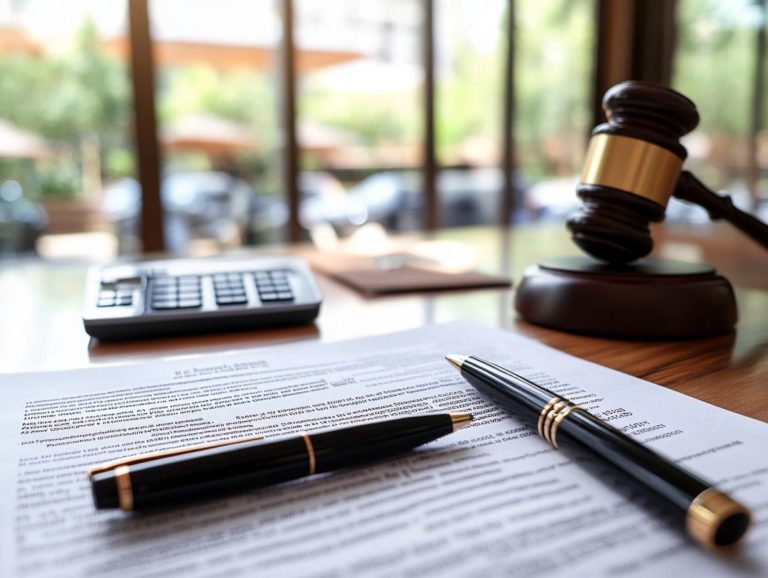Understanding the Role of Prior Art in Patents
In patent law, understanding prior art is vital for your success. This article covers various forms of prior art, including patent documents, non-patent literature, and public use.
You will learn how prior art affects patent examinations. It influences the search process and is crucial for challenging patents.
Find practical strategies and tips for an effective prior art search. This will help you navigate this critical aspect of intellectual property.
Contents
- Key Takeaways:
- Definition and Importance in Patent Law
- Types of Prior Art
- How Prior Art is Used in Patent Examination
- Challenging a Patent with Prior Art
- Strategies for Finding and Using Prior Art
- Frequently Asked Questions
- What is prior art?
- Why is understanding the role of prior art important in the patent process?
- How does prior art affect the patentability of an invention?
- What is the best way to search for prior art?
- Can prior art from other countries affect patentability?
- Is it possible to patent an invention even if there is prior art?
Key Takeaways:
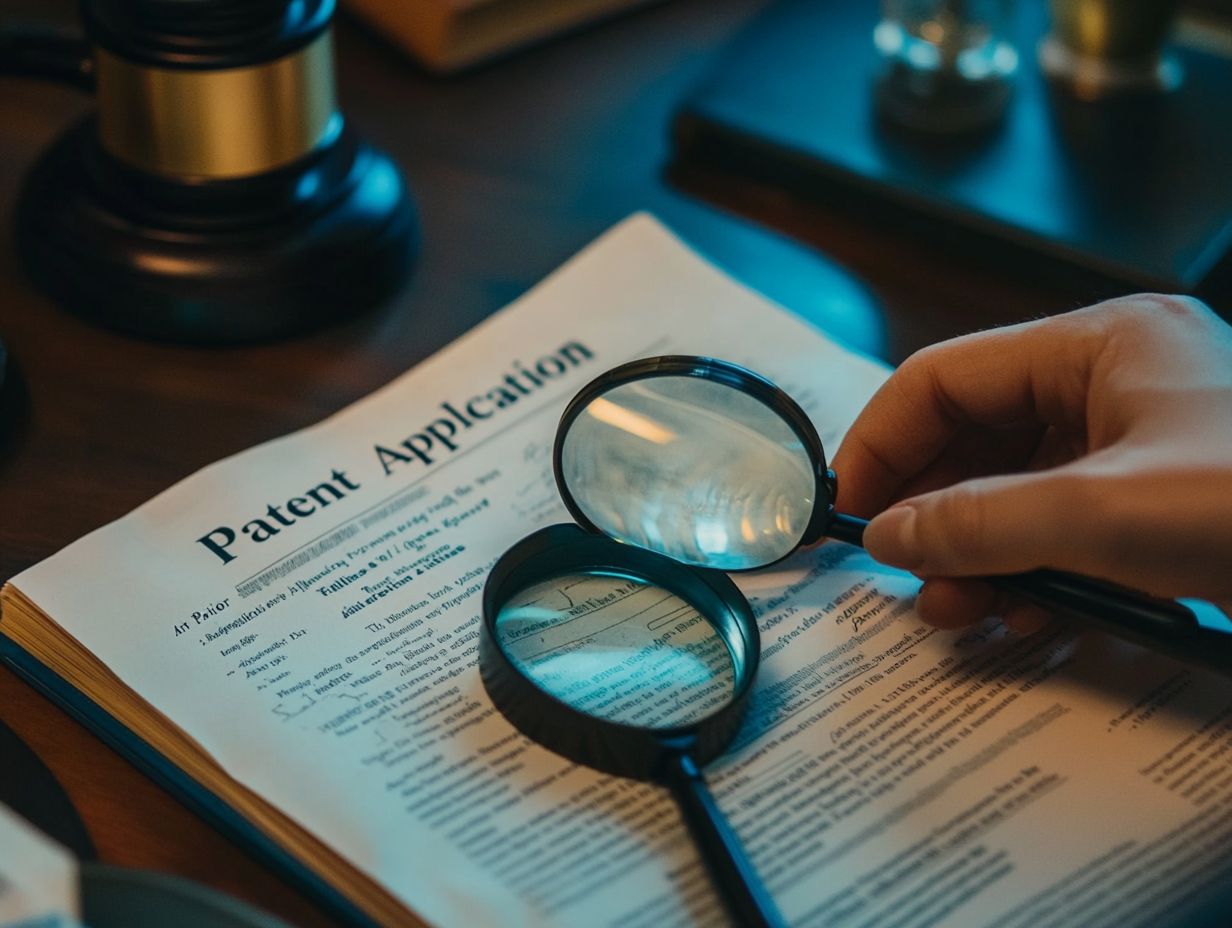
Prior art includes any public information that helps determine if a patent is new and not obvious.
It covers patent documents, non-patent literature, and public use.
Knowing about prior art is crucial for both obtaining and challenging patents, making thorough searches essential.
Definition and Importance in Patent Law
Prior art is a key concept in patent law. It refers to any evidence showing that your invention is already known.
This includes public disclosures, technical literature, and past applications.
For anyone seeking a patent, grasping prior art is essential for success. It directly impacts the patent granting process and helps assess if your invention meets novelty and not obviousness criteria.
Its importance is evident in legal analysis and in confirming that your inventive step is genuinely new when compared to existing public knowledge.
Types of Prior Art
There are several types of prior art. They include patent documents, public use, and on-sale activities. Each type influences the novelty of your invention.
Moreover, public engagement in examining these sources contributes to the collective body of knowledge, which can later challenge the validity of a patent.
Patent Documents
Patent documents are crucial. They include published applications and patents that may affect your new application.
These documents provide essential information for patent examiners and are invaluable for conducting a novelty search.
Typically, these documents feature a structured layout that includes a title, abstract, detailed description, claims, and often drawings or diagrams, all of which together capture the essence of the invention.
Accessing these documents is straightforward thanks to online databases. This allows inventors and legal professionals to efficiently navigate the vast landscape of available information.
The significance of these documents in patent searches cannot be overstated, as they help identify existing inventions and ensure that your new applications won’t infringe on prior art.
By carefully examining patent documents, you can assess novelty and public disclosure, ultimately shaping the development trajectory of your innovations and contributing to a robust intellectual property landscape.
Non-Patent Literature
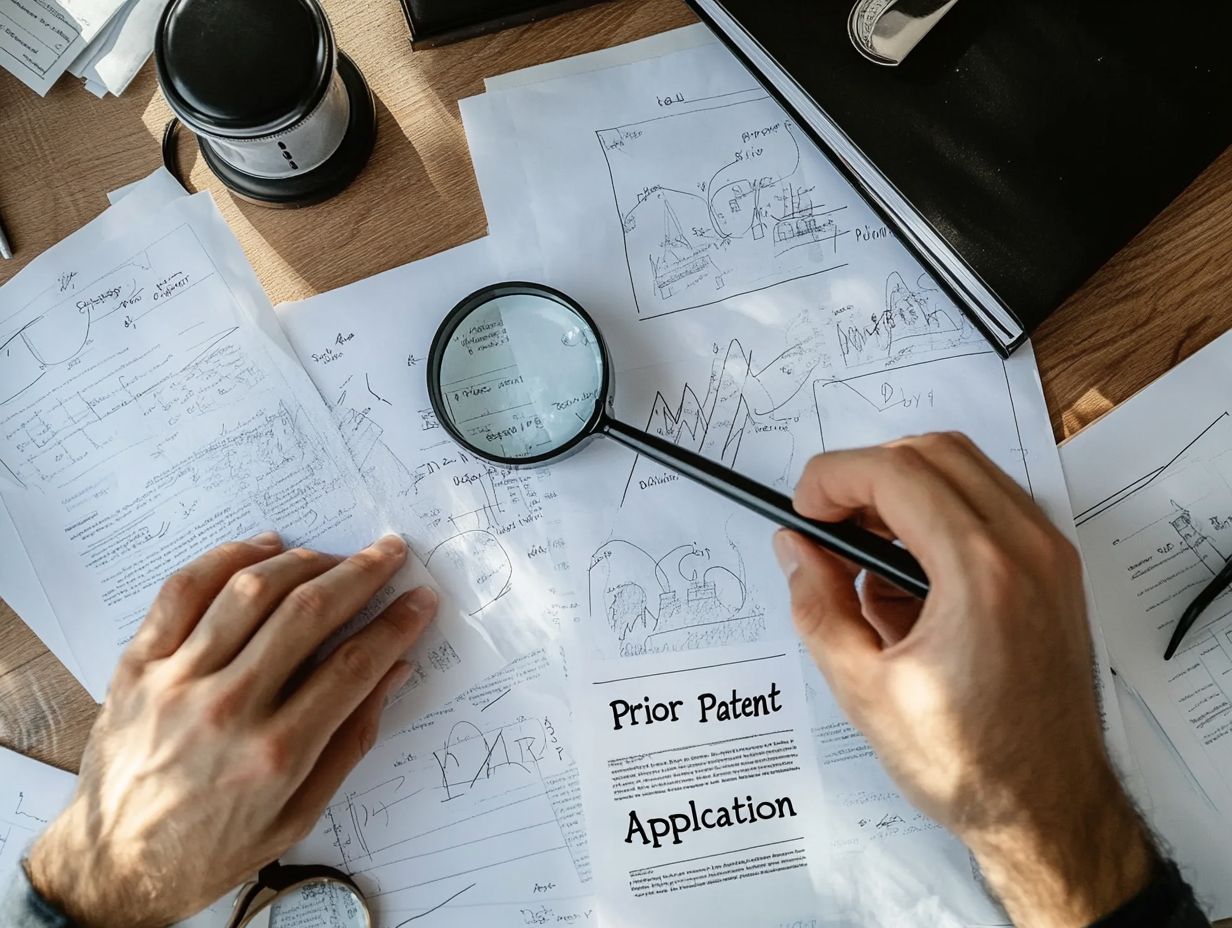
Non-patent literature includes a diverse range of publications that are essential for conducting thorough prior art searches. This includes everything from technical literature and scientific journals to conference papers.
Engaging with this type of literature is essential for showing public knowledge and evaluating the patentability of new inventions. The important role non-patent literature plays in intellectual property effectively showcases the existing knowledge base before an invention’s filing date.
For instance, research papers that delve into emerging technologies or industry reports detailing advancements can serve as compelling evidence to question the novelty of a patent claim. Resources like Google Scholar, IEEE Xplore, and PubMed offer extensive repositories for accessing relevant articles and documents.
Gaining insights into existing work can boost your patent chances! By incorporating this literature into your evaluations, you can better understand how your innovations relate to existing work, ultimately affecting your chances of securing a patent.
Public Use and On-Sale Activities
Public use and on-sale activities are crucial forms of prior art that could potentially invalidate a patent if your invention was publicly used or sold before the effective filing date of your patent application. You must understand these concepts as a patent applicant, as they may significantly impact both the patent granting process and the validity of your patent.
These elements are key for tracking when an invention was revealed. Take the case of Pfaff v. Wells Electronics, where the U.S. Supreme Court clarified that an invention is considered ‘on sale’ if it is ready for patenting and offered for sale.
This shows that actions like showcasing a prototype at trade shows or negotiating sales agreements can harm your patent rights. These implications affect all businesses that must navigate the intricate landscape of patent law, especially when the validity of their intellectual property comes under scrutiny.
The challenges stemming from public disclosures and sales not only jeopardize patents but can also lead to strategic legal disputes over the interpretation of what constitutes prior art.
How Prior Art is Used in Patent Examination
Prior art plays a vital role in the patent examination process, serving as a guiding compass for patent examiners during the substantive review of applications. This phase includes novelty searches that delve into existing prior art to ascertain whether an invention meets the requirements for getting a patent.
A thorough legal analysis of prior art is essential, ensuring that the inventive step remains both new and non-obvious two critical benchmarks for patent approval. Moreover, the collaboration among patent offices worldwide significantly bolsters the effectiveness of incorporating prior art into examination protocols.
Search and Evaluation Process
The search and evaluation process for prior art involves a meticulous investigation of patent databases and various resources to pinpoint relevant public disclosures and existing patents. This process is essential for conducting comprehensive prior art searches, allowing patent examiners and applicants alike to assess the novelty of an invention and its alignment with patentability requirements.
Tools such as DEPATISnet and PATENTSCOPE are essential in streamlining this search. Beyond these tools, you can leverage databases like Google Patents and the USPTO s Patent Full-Text and Image Database to expand your search parameters.
Evaluating prior art not only helps in identifying potential infringement issues but also shapes the strategy behind your patent applications. By gaining insight into what has already been disclosed, you can refine your claims and arguments, thereby enhancing your chances of successfully navigating the intricate patenting process.
Adopting this proactive approach can profoundly influence the outcome of your applications, either bolstering or undermining your position in the eyes of patent examiners. Act now to protect your inventions!
Challenging a Patent with Prior Art
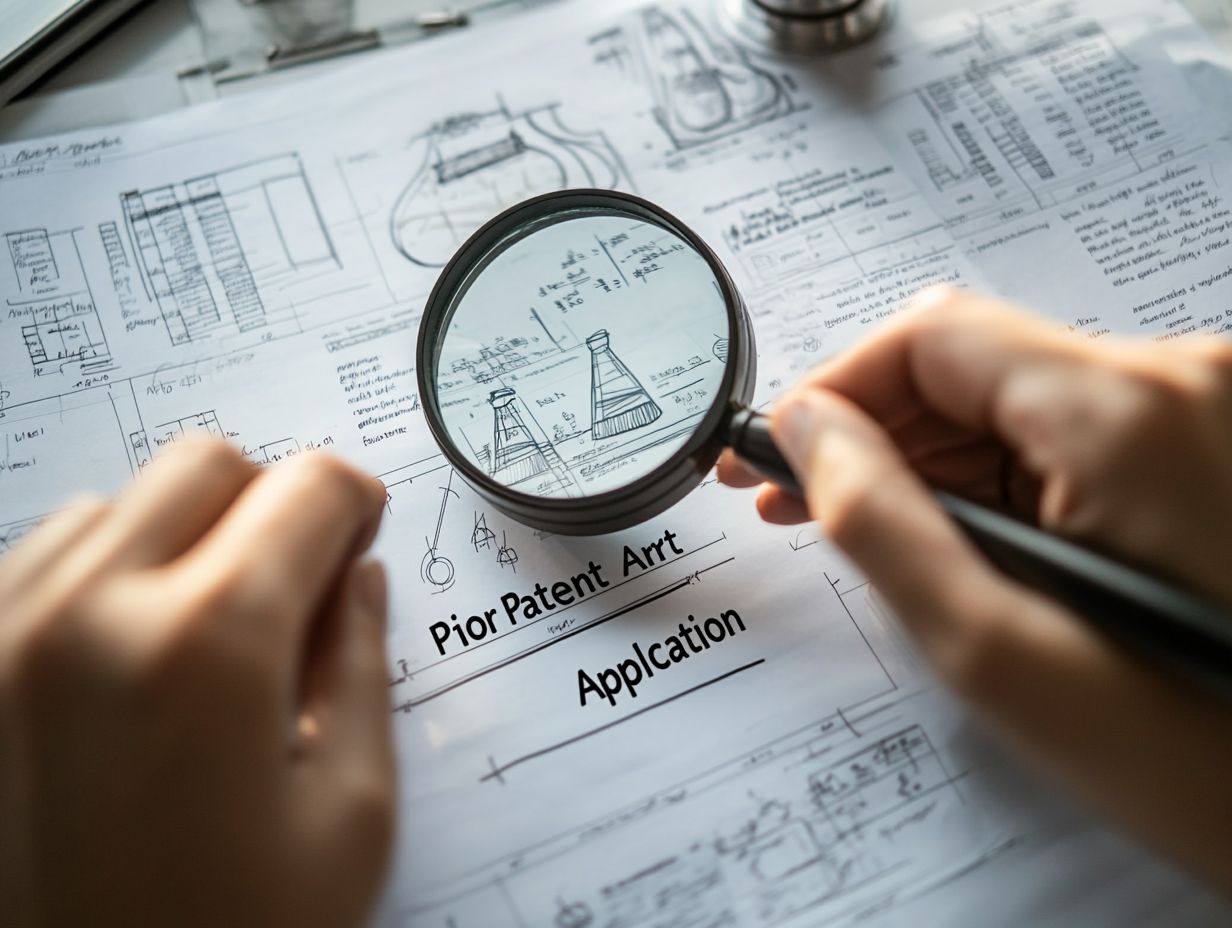
Challenging a patent with prior art is a key legal strategy for contesting the validity of a patent. This is particularly important in cases challenging a patent’s validity or during infringement disputes.
By presenting relevant prior art, you can show that a patented invention lacks novelty. It also helps to prove it doesn’t meet the criteria set by patent law.
This process helps maintain intellectual property rights and promotes fair competition.
Invalidity and Infringement Claims
Invalidity claims arise when prior art is introduced to argue that a patent shouldn’t have been granted. Infringement claims, on the other hand, assert that someone is violating the patent holder’s rights.
Both claims require a thorough examination of prior art to assess patent validity. Understanding prior art is crucial, whether you hold a patent or are challenging one.
Invalidity claims can challenge a patent’s legitimacy, while infringement claims focus on whether someone has crossed legal boundaries.
For patent holders, a successful invalidity claim can threaten market exclusivity. In contrast, infringement claims require solid evidence and often lead to lengthy litigation.
This interplay highlights the importance of navigating prior art effectively to defend or contest patent rights.
Strategies for Finding and Using Prior Art
Developing effective strategies for finding prior art is crucial for patent applicants or legal professionals. These strategies involve thorough searches and utilizing various resources.
Consider patent databases, technical literature, and public disclosures. A systematic approach saves time and enhances your chances of uncovering important prior art.
Tips and Resources for Conducting a Prior Art Search
A successful prior art search requires planning and the right tools. Use multiple search platforms like Espacenet, Google Patents, and PATENTSCOPE. This maximizes your investigation’s breadth.
Master search operators and keywords to boost your effectiveness. This can lead to finding relevant prior art that may influence patent applications.
Familiarize yourself with advanced techniques, like Boolean operators. Combining keywords with AND, OR, and NOT can refine your search results dramatically.
Organize your search by classifications or IPC codes to find overlooked patents.
Make use of citation tools within databases to discover related patents and articles, giving you a broad view of your field.
Frequently Asked Questions
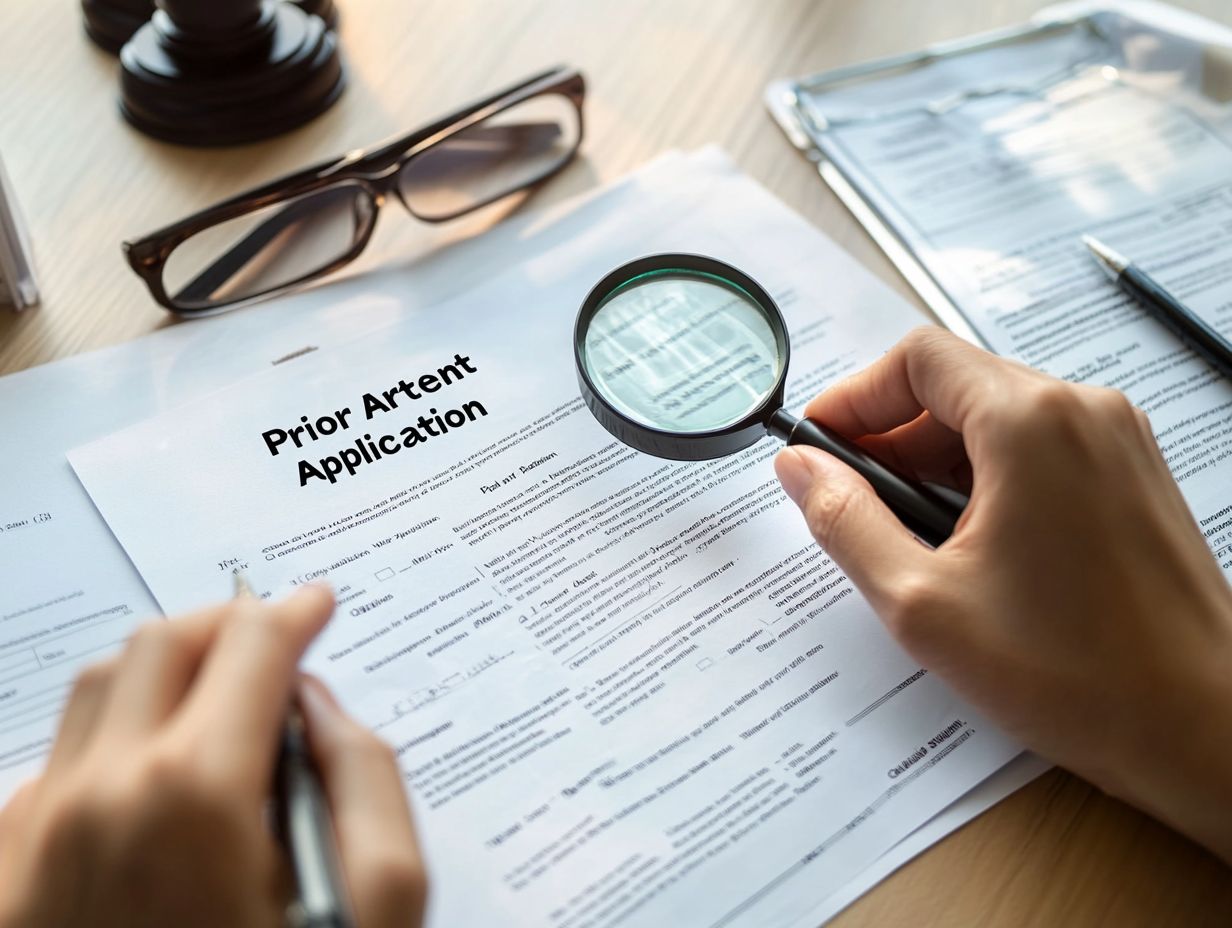
What is prior art?
Prior art is any information relevant to an invention that has been publicly disclosed before a patent application is filed. This includes previous patents, scientific publications, and public demonstrations.
Why is understanding the role of prior art important in the patent process?
Understanding prior art is crucial. It helps figure out if an invention is new and not obvious.
How does prior art affect the patentability of an invention?
Prior art can lead to rejection of a patent application if the invention isn t new. Competitors can also use it to challenge granted patents.
What is the best way to search for prior art?
The best way to search for prior art is through online databases like the USPTO s Patent Database or Google Patents. Start your search today to protect your invention!
Can prior art from other countries affect patentability?
Yes, prior art from other countries can impact patentability. Most countries have similar patent laws and standards for novelty.
Is it possible to patent an invention even if there is prior art?
Yes, you can still patent an invention with prior art. However, the invention must not be obvious to someone skilled in that field.





